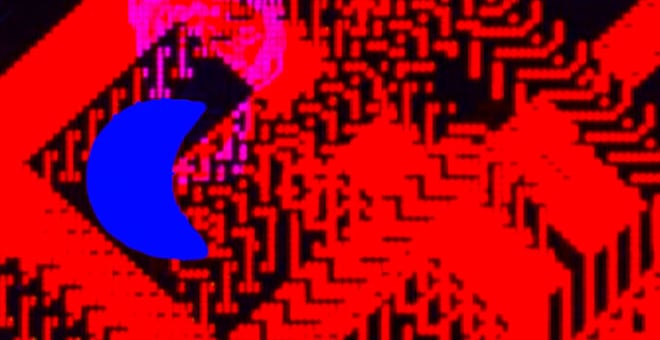UFO's / UFO's
Lillian F. Schwartz
United States / 1971 / 3' 0''Screenings
Synopsis
UFO’s proves that computer animation – once a rickety and gimmicky device – is now progressing to the state of an art. The complexity of design and movement, the speed and rhythm, the richness of form and motion, coupled with stroboscopic effects is unsettling. Even more ominously, while design and action are programmed by humans, the ‘result’ in any particular sequence is neither entirely predictable … being created at a rate faster and in concatenations more complex than eye and mind can follow or initiate. (Amos Vogel, Village Voice)
Lillian F. Schwartz (b. 1927) began drawing as a child when her older brother, who worked for Walt Disney doing cels, brought home materials for her to use. During WWII, she was assigned as a Navy student cadet nurse to Fukuoka. Paralyzed by polio, she was taught to focus on each muscle, leading to training in pigments, pen and ink. She spent the next decades studying da Vinci and other perceptual artists while refining her techniques in various. She made breakthroughs in oils, acrylics, kinetics and mobiles, eventually being asked to join Bell Labs in 1968 by Leon Harmon, the father of decomposition. In 1969, AT&T asked her to do a computer art film. Since computer time was expensive, she used her computer coding for a few minutes but most of the film, Pixillation (1970), was done at her home studio and using new color and editing techniques. Pixillation won numerous awards, led to her appointment as the AT&T goodwill ambassador, and the commissioning of UFO’s. Due to an eye diseases from ionizing radiation, Schwartz devised new techniques for color saturation, layering, editing, texture mapping, and perceptual aspects of the eyes’ cones and brain interpretation (besides, da Vinci and della Francesca, her contemporaries at the Labs, Bela Julecz, Leon, John Krauskopf, and, outside, Edwin Land of Polaroid fame). UFO’s (1971) was the first 2D/3D film without pixel shifting. The glasses needed to see the 3D – Chromatek or Chromodpeth – were not invented for another twenty years. It turned out that almost all of her work was 2D/3D. Schwartz is renowned for making the computer and its disparate elements into a tool “for both artist and scientists” (Arno Penzias, Nobel Prize winner and VP of research at the Labs). She is one “of those rare geniuses” (Max Mathews, father of digital musical, Labs). Schwartz currently lives in NYC and although almost completely blind, teaches students at local colleges in another new technique of texture mapping to create 3D. Her work has been exhibited in every major museum; she has won an Emmy and was nominated for an Oscar. As the USAI’s goodwill ambassador, she lectured worldwide on computer imagery.
Film is copyright © 1971, Lillian F. Schwartz.





